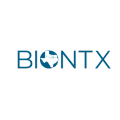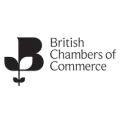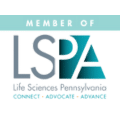Dr Julie Warner, Director of Regulatory Affairs at Boyds, is also the Associate Editor of TOPRA’s Regulatory Rapporteur journal. In April, Dr Warner gave an overview of the current state of play relating to the Falsified Medicines Directive in Europe.
Not a day goes by now without something “fake” in the news (and it’s often the news itself), making it hard to distinguish what is real from what is not. Sadly, our industry has also fallen prey to falsification in recent years, as criminals have increasingly recognised an opportunity to make significant amounts of money from the falsification of medicines. According to the Royal Pharmaceutical Society in England, medicines are the second largest category of falsified items imported into Europe (compared with 2004, when numbers were so low that they weren’t even recorded separately). However, with the introduction of the Falsified Medicines Directive (FMD; 2011/62/EU), amending Directive 2001/83/EC, regulators aim to address this at a European level. Measures to counteract the growing problem of counterfeit products are also now in place in the US, in accordance with the FDA’s Global Strategic Framework for Spurious, Substandard, Falsified, Falsely-labeled and Counterfeit (SSFFC) Medical Products.
In preparation for implementation in February 2019, elements that will need to be in place by that date include manufacturing/packaging line upgrades, training in Blueprint software, 2D barcodes and tamper-evident packaging, updates/revisions to quality management systems, and supply chain mapping.
Meanwhile, over the past few years regulators have joined forces across the globe to discuss how best to combat the falsification of medicines which, at best, puts the patient at risk of lower benefit (less or no active ingredient) or, at worst, significantly affects patient safety. In an ever increasing global regulatory environment, the only way this can be done effectively is by good communication and the sharing of information across regulatory and law enforcement networks. The scale of the criminal activity is evident at the level of just one regulatory agency, as evidenced by data from the UK Medicines and Healthcare products Regulatory Agency on the important work undertaken by it in this regard. The good news is that the vast majority of falsified medicines are identified before they reach retailers or patients; however, given the rising number of cases, this is clearly a daily battle and, despite best efforts in working with a number of agencies and bodies including the World Health Organisation, INTERPOL, and the Permanent Forum on International Pharmaceutical Crime, there are some cases which unfortunately do slip through the cracks.
The measures introduced by the FMD are many, and fall broadly into four “pillars”: safety features of medicines; supply chain and good distribution practice; measures covering active substances and excipients; and the sale of medicines by internet pharmacies. Given the delegated Regulation (EU) 2016/161 on safety features, the requirements of which must be adopted by pharmaceutical manufacturers by 9 February 2019, it is clear that there is a significant amount of work required between now and that date by companies and their stakeholders to make sure that the necessary systems are implemented and fully functional.
In conclusion, the threat to public health from falsified medicines is real and growing on a daily basis; it continues to present tremendous challenges for regulators and for manufacturers and those involved in the supply chain of medicinal products. However, the measures currently or soon to be in place in many countries will provide a mechanism to prevent opportunities for these products to enter the supply chain; this may well be an uphill struggle, with regulators trying to stay one step ahead of the individuals and criminal networks responsible on a global basis but, for now, it appears as though the chips are in our favour.
Therefore, tonight’s real headline is that falsified medicines are here… but hopefully not for long.
This article was taken and adapted from the original published in Regulatory Rapporteur, Volume 14, No 4, April 2017.








